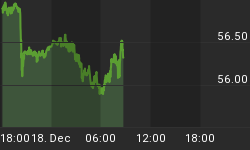Credit forces always trump great speculative visions and the world is fast running out of speculative credit.
"Measured by the increase in asset values over the past five years, the global housing boom is the biggest financial bubble in history. The bigger the boom, the bigger the bust." The Economist, Week of June 23
" Even if risks are being appropriately priced given the current outlook, financial market participants have taken on relatively illiquid assets to enhance yield, possibly giving rise to difficulties in adjusting balance sheets." Bank of England, Week of June 23
The last sentences in the above statements from distinguished sources should be compelling but, after a brief break, speculative convictions in commodities continue.
No matter whether the speculation has been in tangible assets, as in 1980 or 1988 or, for that matter, in 1920, one key to the contraction has been the spike and reversal in commodity prices. Much the same holds when the mania has been in financial assets, as in the fateful blowouts of 2000, 1929, and 1873 - to mention only 3 of the 6 great financial bubbles.
We have been describing this boom as the one that typically arises out of the collapse of a tech mania. With strong commodities, we have also been describing this as an "old fashioned" business cycle. More lately, we have been noting that the crowd has been again showing considerable compulsion to be long the big visions.
However, our mission has been, as best as is possible, to anticipate major trend reversals. Although this phase of speculation has encompassed both financial and tangible assets, the alerts to the reversal will be the old standards of credit spreads widening (![]() since March), commodities topping (
since March), commodities topping (![]() ditto), and the yield curve reversing to steepening (not yet, but soon).
ditto), and the yield curve reversing to steepening (not yet, but soon).
Too much of the financial world remains convinced that the Chinese expansion is unassailable and the Fed's compulsion to depreciate the dollar is not to be denied. However, Mr. Market and Mother Nature are about to reverse most, if not all, of the games.
Fortunately, this will likely be done in the typical manner that, beyond the stalling out of commodities, will include a profound change in the credit markets.
There has been a wall of worry about massive shortages of base metals, metallurgical coal, and crude oil.
One recent example sums it up: "World Reserves of Cheap Oil Have Probably Peaked".
This prompts a line for the way Mr. Market and Ms. Nature will deny the mania in commodities: "World Reserves of Cheap Credit Have Probably Peaked".
The end of great manias involves a mighty struggle of speculative passions. These include the compulsion of the "big story", those who have been prematurely shorting it and, above all, those who have been providing the credit. The latter always includes the "easy money" compulsion of borrowing short and lending long, which drives the yield curve towards inversion.
Since the advent of the modern senior central bank with the Bank of England in 1694, the ability of market forces to expand and then contract credit have eventually and always overwhelmed the attempts of policymakers to continuously expand credit. All that is needed is to have the mania encompass all of the available credit and then the mystery of the end of a bubble develops.
It is essential to fully grasp that it has not been "liquidity" that has been driving prices up - quite the opposite - as soaring prices permit and foster the expansion of credit. This is what someone with perspective at the Bank of England is concerned about in the quotation above.
In looking at U.S. corporate spreads, there has been a significant reversal to widening in March. Using the "high-yield", over treasuries, going through 350 bps would extend the widening trend (330 bps this week; the "low" was 183 bps). This would be one typical warning on the demise of this phase of a great asset inflation.
Another step would be the reversal in the U.S. treasury curve from flattening to steepening. In reviewing the data since 1858, it is not essential that the curve fully invert to signal a contraction. All it needs is to reverse to steepening within the context of a market mania.
The U.S. curve is rather flat and the U.K. curve, which inverted from early March to early June, has set a modest steepening trend.
The CRB, in its original form, has virtually (in timing and percent gain) replicated the bull market that blew out in 1980. It will be interesting to see if the increased weighting in crude oil maintains the replication.
However, this is academic and it is important to recognize the signposts of speculation and these are reasonably typical - whether the action is on stocks, bonds, commodities, or real estate. The details of weighting of one commodity index is not all that material.
Moreover, the characteristics of speculation are fungible and can be seen in whatever the asset play is and in whatever century it occurs.
The warnings from change in the credit markets are typical and are mounting, in which case all that is needed is to have prices in the speculative games weaken as credit spreads extend their widening trend and the U.S. treasury curve reverses to steepening. At that stage, Mr. Margin joins forces with Mr. Market and Ms. Nature.
The conclusions in the above quotation from The Economist are appropriate, but it's worth adding that, as seen in 1Q 2000, as long as the uptrend is intact the street will believe the most preposterous stories.
It is possible that this could be more widely understood by October.















